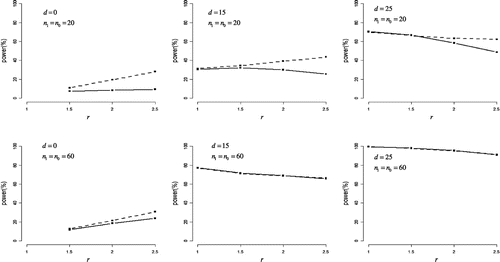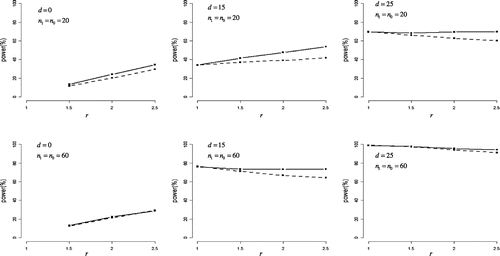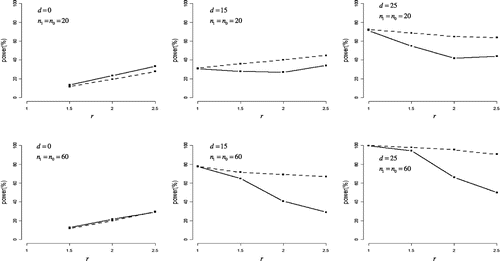Figures & data
Table 1. Type I error rates for the half Student’s t-test and half Johnson’s modified t-test
Figure 1. Statistical power in normal distribution.
The difference in means between case and control groups (denoted as d) was set to 0, 15, and 25. The ratio of standard deviations for case group to control group (denoted as r) was set to 1, 1.5, 2, and 2.5.

Figure 2. Statistical power in non-normal but symmetric distribution.
The difference in means between case and control groups (denoted as d) was set to 0, 15, and 25. The ratio of standard deviations for case group to control group (denoted as r) was set to 1, 1.5, 2, and 2.5.

Figure 3. Statistical power in positively skewed distribution.
The difference in means between case and control groups (denoted as d) was set to 0, 15, and 25. The ratio of standard deviations for case group to control group (denoted as r) was set to 1, 1.5, 2, and 2.5.

Figure 4. Statistical power in negatively skewed distribution.
The difference in means between case and control groups (denoted as d) was set to 0, 15, and 25. The ratio of standard deviations for case group to control group (denoted as r) was set to 1, 1.5, 2, and 2.5.

